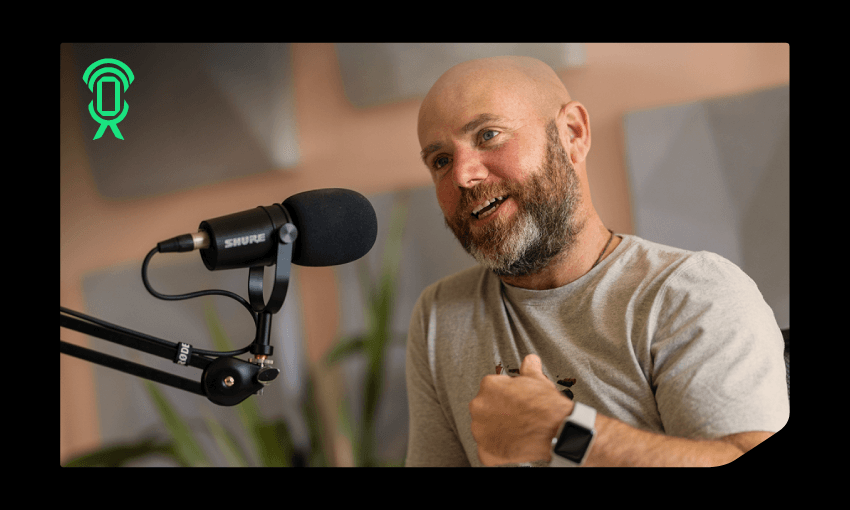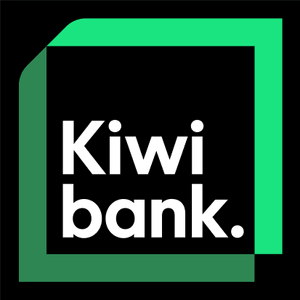A Kiwibank series in collaboration with The Spinoff Podcast Network, This is Kiwi celebrates extraordinary achievements by ordinary New Zealanders. In the fourth episode, host Jane Yee speaks to Robbie van Dam, innovator and co-founder of pest control company Goodnature.
Robbie Van Dam is a visionary entrepreneur who revolutionised the pest control industry. Every year an estimated 25 million native birds in New Zealand are killed by introduced predators, and van Dam’s product is helping to reduce that number. He also happens to be one of Kiwibank’s New Zealander of the year Spark innovator finalists for 2023. While working part time for the Department of Conservation, van Dam came up with the idea for Goodnature – initially a research and development company. After he and a friend saw the inefficiency of existing traps, they created a new model that delivers a swift and humane end to invasive species.
In 2008, Goodnature became a full-time gig for van Dam and since then, his remarkable accomplishments have left an indelible mark on the pest control and New Zealand innovation landscape.
Van Dam joined Jane Yee on the This is Kiwi podcast. Read an excerpt from the full interview below.
Jane Yee: At the 2023 New Zealander of the Year awards, you were a finalist for Innovator of the Year for your company Goodnature. Tell me what it is.
Van Dam: As a part time job I was working for the Department of Conservation, and my job there was to work on really critically endangered species. So you’d have a bunch of scientists that would create an understanding of the breeding behaviours of particular animals. And in New Zealand it’s pretty straightforward: we see them plummeting. And we monitor and we know what’s going on, the challenge is how to reverse that.
My job was to try and come up with solutions to some of those challenges. So when a species got critically endangered; tākahe, kākāpō, we have lots of invertebrates and skinks and all sorts of crazy things that also need a bit of support.
Through that process, you learn that there are two sides to a biodiversity argument: cuddle things back into existence, or just killing things. If you look at the killing side of things, there really are only six or seventh reasons that most species are in decline. If you remove those, then you can support 4,000-5,000 species back to health.
I had a really close friend at university. And we sat down one evening, and we thought of 100 ways to kill a rat. Once we had a couple of ideas, we went back to the Department of Conservation and said, “we think we can reduce the cost of trapping by 90%, or, the control of invasive species by a significant amount.”
Tell us a little bit about the product that you came up with.
Craig was out biking one day with his daughter, and he took the bike out of the back of the car and the tire was flat. A mountain biker coming past offered to pump it up and he had a little CO2 canister. There’s a huge amount of energy in one of those things and so we use that energy to make a trap reset itself. So it’s simply automating a system that means that we get two dozen kills out of a trap rather than one.
That trap is the primary product. And then from that, of course, data is a really significant product for us. We all have these traps, we know exactly where they are, when they go off, how often people load them and what they’ve caught. And so we start to build up a picture and build all the context around trends. It’s one of the most sophisticated systems there is on the planet for this type of stuff.
We all have the potential to innovate in different ways in our lives. What’s your process for that?
Innovation comes from the crack between what you think is going on and what’s really going on. Sometimes what you think is going on is quite different and often it’s about a misunderstanding of how things work, that you actually come up with the best stuff. So that’s how I learned, and that’s how I innovate.
It can be a tendency for us to assume that because something has always been a certain way, we’ve reached the peak, found the solution, that’s the best way to do it. And that can be a real barrier to innovation, right?
Absolutely. Fundamentally, everything can be better. I wake up in a world where it has to be better, that’s what drives me: there’s got to be a better way to do anything. If there wasn’t, we would have stopped evolving a long time ago.
I think Kiwi are particularly good at having a crack at most things, and the good thing about that boldness and that energy is that we stumble into solutions quite quickly, we’ll throw ourselves into things.
I know you will have had many challenges along the way. And I think part of inspiring people and setting up people for success is being realistic about some of the things that you’ve encountered. What have you learned that you think is really important for people to know, to help maybe make the journey less bumpy?
I think the road is really challenging. We’re almost 20 years old as a business and every bit of it’s kind of challenging. There’s not an easy bit of it.
As long as you have ethical alignment with the people that you’re with, so if you have investors, make sure that they see the world the same way as you. Be really prepared for lots and lots of solving lots of lots of problems. Try to solve maybe a few things in isolation, rather than all of them at once. We certainly suffered that, in the beginning. I think businesses are a remarkable mechanism for doing good. And I do think people are prepared to put their money into biodiversity or enhancement or those businesses making the world a bit better.
This interview has been shortened. To hear the full kōrero, listen to This is Kiwi, wherever you get your podcasts.


